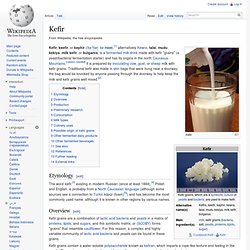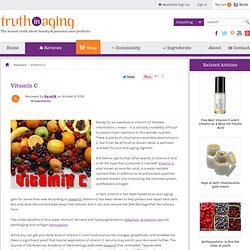

Yeast production. 8 Reasons to Eat Fermented Foods. It’s very recent that fermented foods have begun to disappear from our plate.

Modern pickles and sauerkraut are made with vinegar instead of the traditional method of lacto-fermentation using salt. Bread and pasta are made with commercial yeast instead of being naturally leavened with wild yeast (sourdough). Wine, beer and cheeses are being pasteurized — killing off all the good bacteria we so desperately need to maintain health.
But there are many advantages to going back to the traditional ways of our ancestors, and eating more fermented foods. Humans all over the world have been fermenting food since ancient times. “In the normal scheme of things, we’d never have to think twice about replenishing the bacteria that allow us to digest food. 1. Fermenting our foods before we eat them is like partially digesting them before we consume them. 2. Do you suffer from lactose intolerance? 3. Your body needs [enzymes] to adequately digest, absorb, and utilize the nutrients in your food. 4. 5. Kefir. Kefir Etymology[edit] The word kefir,[3] existing in modern Russian (since at least 1884),[4] Polish and English, is probably from a North Caucasian language (although some sources see a connection to Turkic köpür (foam)[5]) and has become the most commonly used name, although it is known in other regions by various names.

Overview[edit] Kefir grains are a combination of lactic acid bacteria and yeasts in a matrix of proteins, lipids, and sugars, and this symbiotic matrix, or (SCOBY) forms "grains" that resemble cauliflower. For this reason, a complex and highly variable community of lactic acid bacteria and yeasts can be found in these grains. Kefir grains contain a water-soluble polysaccharide known as kefiran, which imparts a rope-like texture and feeling in the mouth. Constituents of kefir:[6] The composition of kefir depends greatly on the type of milk that was fermented, including the concentration of vitamin B12. As a result of the fermentation, very little lactose remains in kefir. Left or Right Handed ? How is Vitamin C (ascorbic acid) manufactured. Vitamin C (chemically C6H8O6) can be derived from several sources.

It can be obtained directly from foods that contain naturally-high amounts of ascorbic acid. Although citrus fruits contain large amounts, certain other plants contain much higher levels (e.g., rosehips). One of the first large consumers of ascorbic acid was the Royal Navy, which used lime juice to ward off scurvy among the sailors during prolonged periods at sea. Lime juice was selected because it kept well using the storage methods available at the time on the ships of the day. Although orange and lemon juice contain more ascorbic acid than does lime, it was an effective treatement. The difficulty with plant-based sources of vitamin C is that the amount of the vitamin declines with time.
Although humans are unable to synthesize vitamin C, many animals can. The two industrial methods used to produce vitamin C synthetically employ the sugar glucose. [With information from the Nutrition Almanac, BASF, and Wikipedia.] Vitamin C / Truth In Aging. Ready for an overdose of vitamin C?

Related information, I mean – it is actually incredibly difficult to sustain toxic reactions to this wonder nutrient. There is plenty of information available about vitamin C, but it can be difficult to discern what is pertinent and best for your anti-aging regimen. But before I get to that, what exactly is vitamin C and is all the hype that surrounds it merited? Vitamin C, also known as ascorbic acid, is a water-soluble nutrient that, in addition to its antioxidant qualities and well-known role in boosting the immune system, synthesizes collagen. In fact, vitamin C has been hailed as an anti-aging gem for some time now. The visible benefits of this super vitamin? While you can get your daily dose of vitamin C from food sources like oranges, grapefruits, and strawberries there is significant proof that topical application of vitamin C serums may enrich your skin even further.
Sign me up!